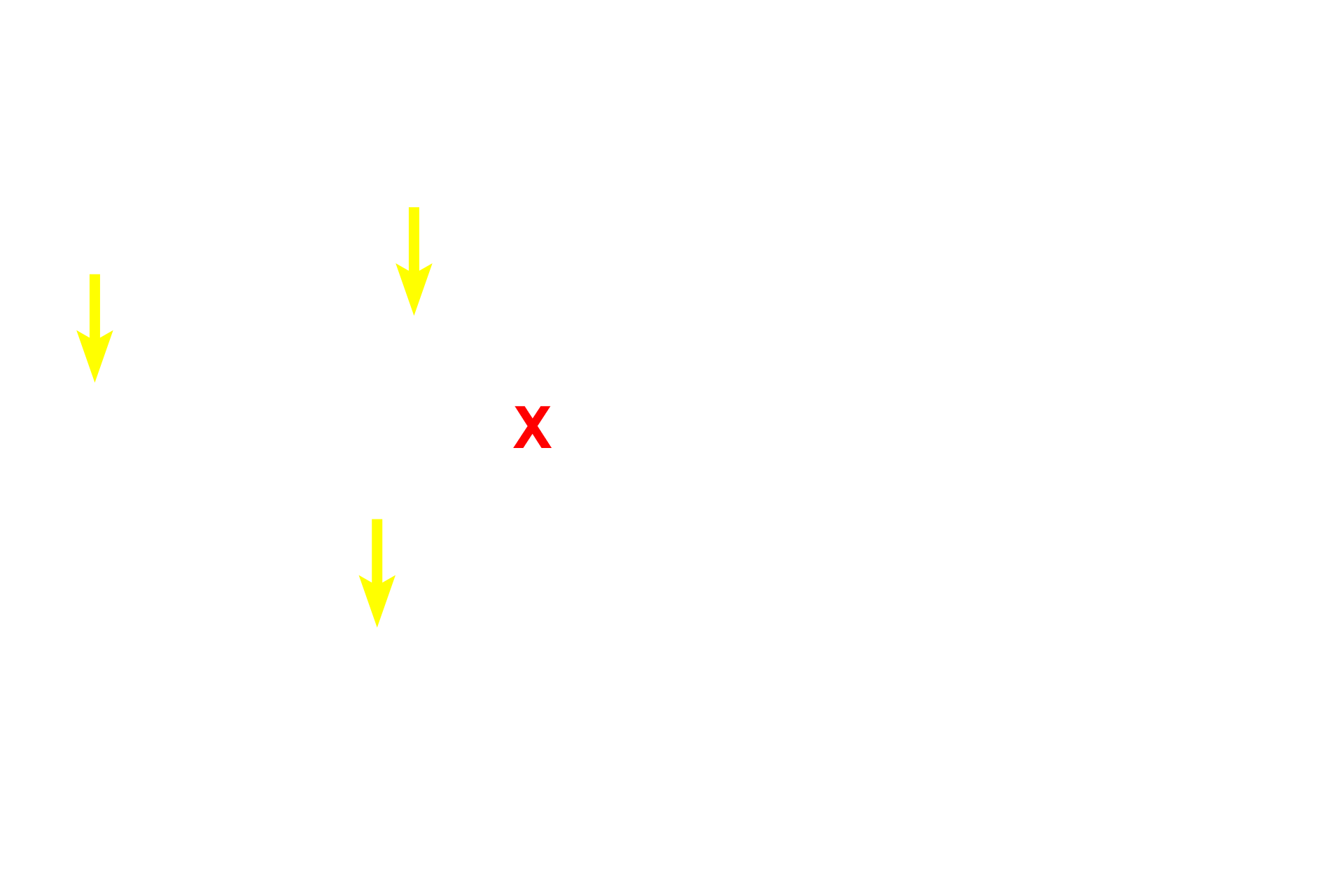
Liver
The liver functions in glycogen storage and mobilization. These images compare the light microscopic appearance of glycogen in a PAS-stained section (left) with that seen by electron microscopy (right). About 75% of the blood that enters the liver does so via the hepatic portal vein, which directly drains the organs of the digestive tract. Thus, the liver is the first organ to receive absorbed nutrients. 1000x, 15,000x

Hepatocytes
The liver functions in glycogen storage and mobilization. These images compare the light microscopic appearance of glycogen in a PAS-stained section (left) with that seen by electron microscopy (right). About 75% of the blood that enters the liver does so via the hepatic portal vein, which directly drains the organs of the digestive tract. Thus, the liver is the first organ to receive absorbed nutrients. 1000x, 15,000x

- Hepatocyte nuclei
The liver functions in glycogen storage and mobilization. These images compare the light microscopic appearance of glycogen in a PAS-stained section (left) with that seen by electron microscopy (right). About 75% of the blood that enters the liver does so via the hepatic portal vein, which directly drains the organs of the digestive tract. Thus, the liver is the first organ to receive absorbed nutrients. 1000x, 15,000x

- Glycogen
The liver functions in glycogen storage and mobilization. These images compare the light microscopic appearance of glycogen in a PAS-stained section (left) with that seen by electron microscopy (right). About 75% of the blood that enters the liver does so via the hepatic portal vein, which directly drains the organs of the digestive tract. Thus, the liver is the first organ to receive absorbed nutrients. 1000x, 15,000x

- Mitochondria
The liver functions in glycogen storage and mobilization. These images compare the light microscopic appearance of glycogen in a PAS-stained section (left) with that seen by electron microscopy (right). About 75% of the blood that enters the liver does so via the hepatic portal vein, which directly drains the organs of the digestive tract. Thus, the liver is the first organ to receive absorbed nutrients. 1000x, 15,000x

- Rough endoplasmic reticulum
The liver functions in glycogen storage and mobilization. These images compare the light microscopic appearance of glycogen in a PAS-stained section (left) with that seen by electron microscopy (right). About 75% of the blood that enters the liver does so via the hepatic portal vein, which directly drains the organs of the digestive tract. Thus, the liver is the first organ to receive absorbed nutrients. 1000x, 15,000x

Sinusoids
The liver functions in glycogen storage and mobilization. These images compare the light microscopic appearance of glycogen in a PAS-stained section (left) with that seen by electron microscopy (right). About 75% of the blood that enters the liver does so via the hepatic portal vein, which directly drains the organs of the digestive tract. Thus, the liver is the first organ to receive absorbed nutrients. 1000x, 15,000x